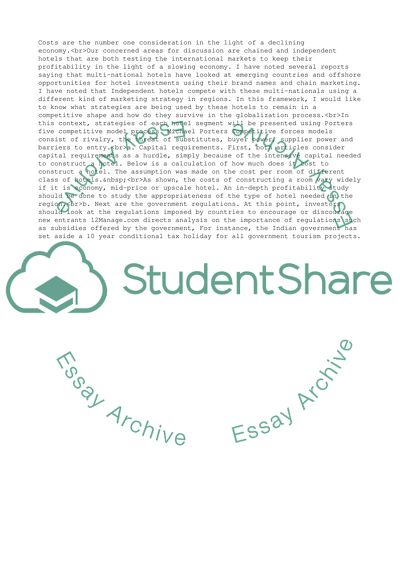Cite this document
(An Insight to the Chained v. Independent Hotels Article, n.d.)
An Insight to the Chained v. Independent Hotels Article. Retrieved from https://studentshare.org/business/1734371-chained-versus-independent-hotels-critically-discuss-and-justify-with-examples-which-operation-is-best-suited-to-survive-in-a-slowing-economy-methods-and-practices-must-be-presented-and-explained
An Insight to the Chained v. Independent Hotels Article. Retrieved from https://studentshare.org/business/1734371-chained-versus-independent-hotels-critically-discuss-and-justify-with-examples-which-operation-is-best-suited-to-survive-in-a-slowing-economy-methods-and-practices-must-be-presented-and-explained
(An Insight to the Chained V. Independent Hotels Article)
An Insight to the Chained V. Independent Hotels Article. https://studentshare.org/business/1734371-chained-versus-independent-hotels-critically-discuss-and-justify-with-examples-which-operation-is-best-suited-to-survive-in-a-slowing-economy-methods-and-practices-must-be-presented-and-explained.
An Insight to the Chained V. Independent Hotels Article. https://studentshare.org/business/1734371-chained-versus-independent-hotels-critically-discuss-and-justify-with-examples-which-operation-is-best-suited-to-survive-in-a-slowing-economy-methods-and-practices-must-be-presented-and-explained.
“An Insight to the Chained V. Independent Hotels Article”, n.d. https://studentshare.org/business/1734371-chained-versus-independent-hotels-critically-discuss-and-justify-with-examples-which-operation-is-best-suited-to-survive-in-a-slowing-economy-methods-and-practices-must-be-presented-and-explained.


